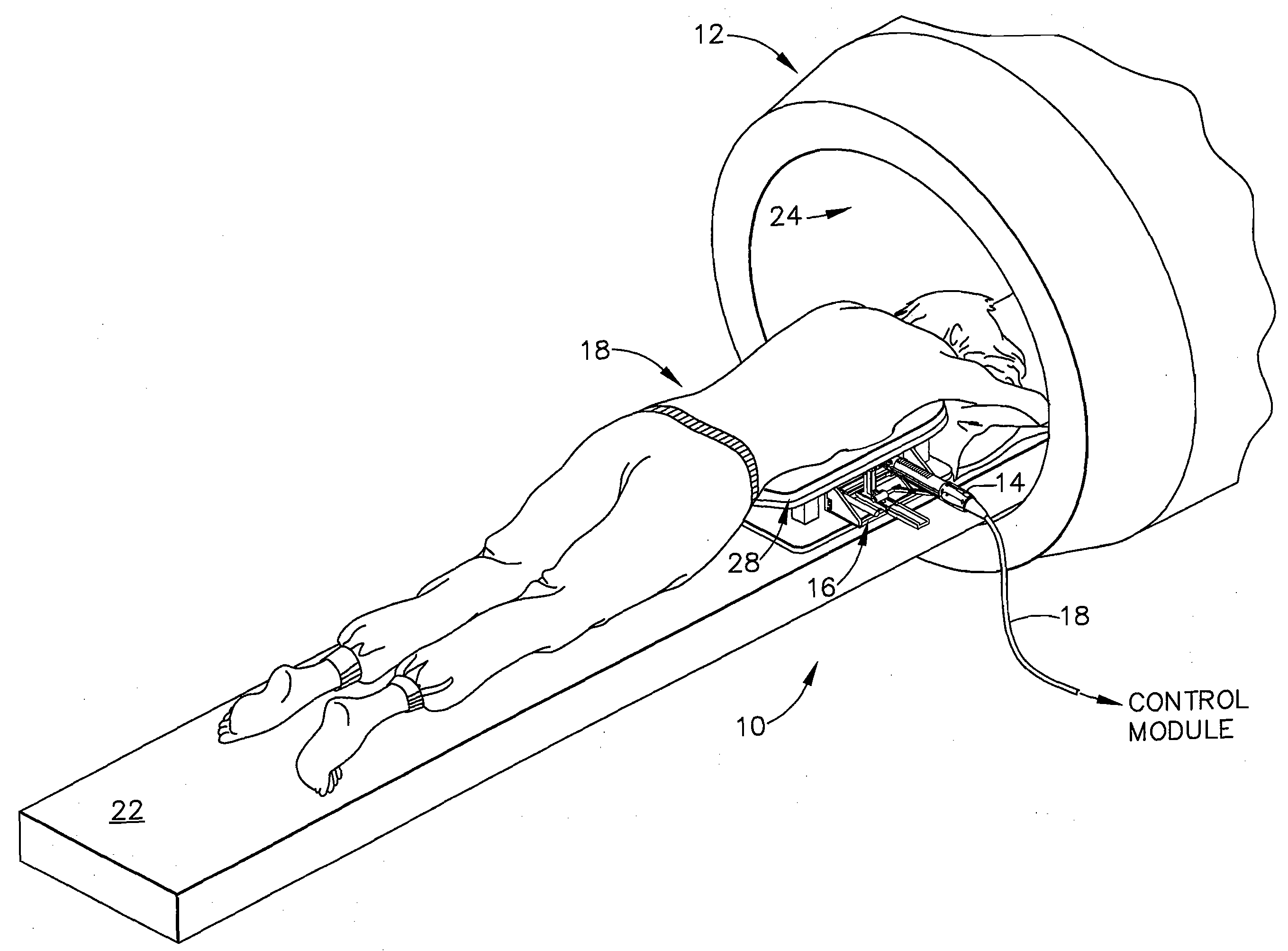Localization mechanism for an MRI compatible biopsy device
a biopsy probe and localization mechanism technology, applied in medical science, surgery, vaccination/ovulation diagnostics, etc., can solve the problems of affecting the use of mri guidance, creating field distortion, and no single procedure is ideal for all cases
- Summary
- Abstract
- Description
- Claims
- Application Information
AI Technical Summary
Benefits of technology
Problems solved by technology
Method used
Image
Examples
Embodiment Construction
[0051]FIGS. 1 through 21 and the accompanying description are taken from the above referenced U.S. patent application “Localization Mechanism for an MRI Compatible Biopsy Probe Device” Ser. No. 10 / 171,330 filed Jun. 12, 2002.
[0052]FIG. 1 depicts a core biopsy instrument system 10 that is vacuum assisted, detachable, and compatible with use in a Magnetic Resonance Imaging (MRI) machine, such as the depicted closed MRI machine 12. In the illustrative embodiment, the core biopsy instrument system 10 includes an MRI-compatible biopsy tool 14 that is selectably attached to a localization mechanism or fixture 16 to accurately and rapidly perform core biopsies of breast tissue with a minimum of insertions of a biopsy probe. A control module (not shown) senses encoder position signal and switch signals from the biopsy tool 14 and provides mechanical and vacuum power to the biopsy tool 14 via power cord 18.
[0053]With reference to FIGS. 1-2, a patient 20 is lying prone upon a patient support ...
PUM
 Login to View More
Login to View More Abstract
Description
Claims
Application Information
 Login to View More
Login to View More - R&D
- Intellectual Property
- Life Sciences
- Materials
- Tech Scout
- Unparalleled Data Quality
- Higher Quality Content
- 60% Fewer Hallucinations
Browse by: Latest US Patents, China's latest patents, Technical Efficacy Thesaurus, Application Domain, Technology Topic, Popular Technical Reports.
© 2025 PatSnap. All rights reserved.Legal|Privacy policy|Modern Slavery Act Transparency Statement|Sitemap|About US| Contact US: help@patsnap.com



